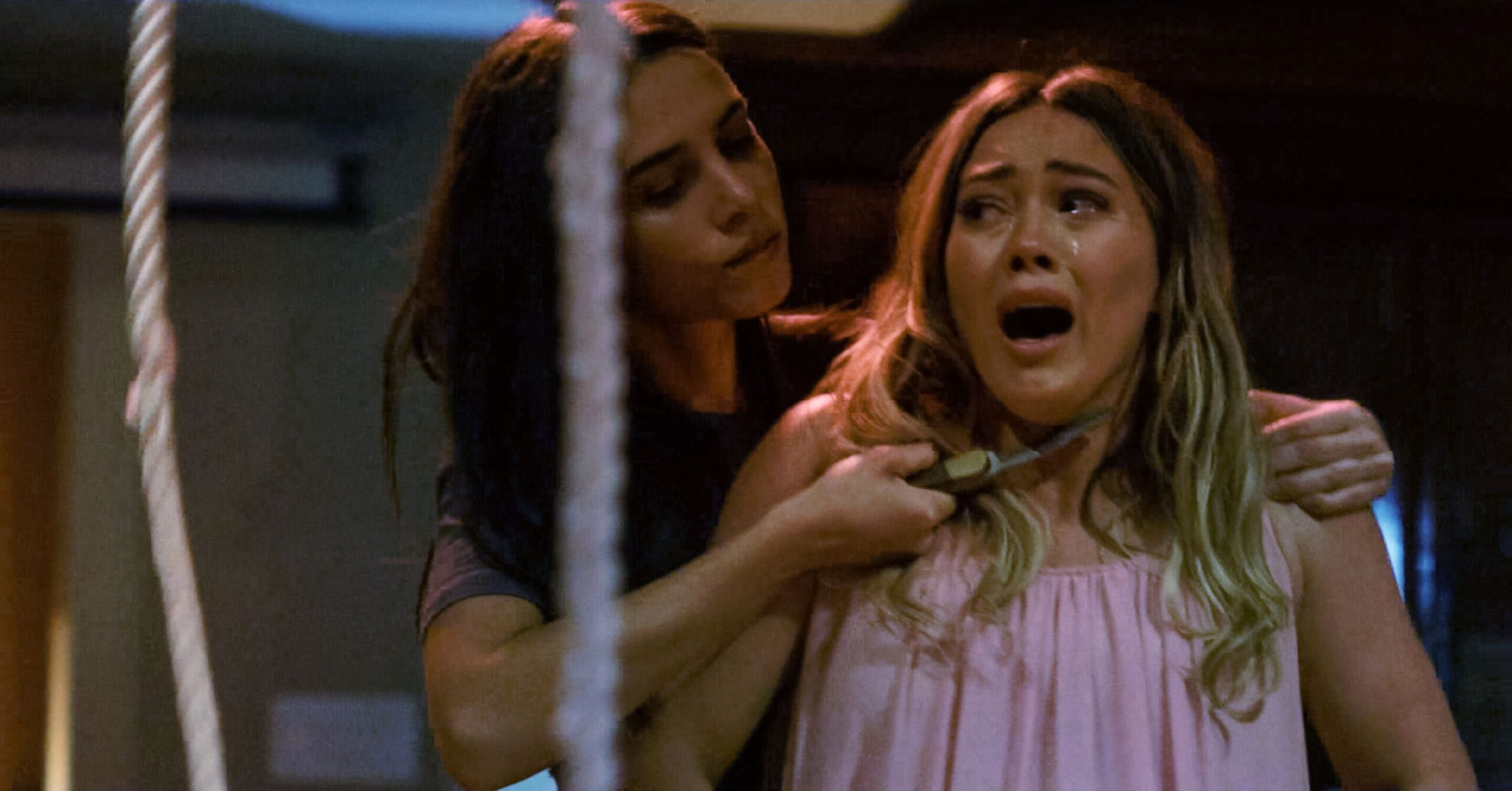THE HAUNTING OF SHARON TATE. Absolutely disgusting film-like product

In the United States, Asylum Studios has been operating skillfully for years, with a marketing strategy based on one simple trick: whenever a blockbuster appears, they quickly, even before the premiere, based on trailers and announcements, with a budget equal to a pack of cigarettes, cobble together their own cinematic monster designed simply to mislead viewers waiting for a major film. There will always be those who, renting Transformers, will accidentally pick up Transmorphers, those wanting to see the new Predator will fall into the trap of Alien Predator, and those firing up Avengers: Infinity War might end up watching Avengers Grimm: Time Wars. These films have no value, no plot, nothing resembling acting. They just “exist” to catch unsuspecting viewers with misleading titles and similar posters. This is the most well-known studio of this type, but essentially harmless. They manage to get by with these little deceptions. But what if someone decides to make a variation on something that should never end up in the cinematic trash bin? And that is exactly what The Haunting of Sharon Tate is – an absolutely disgusting film-like product shamelessly exploiting the tragedy that occurred in 1969 at the house on Cielo Drive, leveraging the fact that the release of Once Upon a Time… in Hollywood has brought this event back into the collective consciousness.

Nothing here makes sense or works. The director of this mess is Daniel Farrands, whose most notable entry in his CV is the screenplay for Halloween VI: The Curse of Michael Myers and the creation of two genuinely good documentaries dedicated to slasher series: Crystal Lake Memories: The Complete History of Friday the 13th and Never Sleep Again: The Elm Street Legacy. But it’s one thing to talk about films from the perspective of a genre fan, and another to create your own horror. Theory is not practice, and in Farrands’ case, this attempt to turn a true tragedy into a psychological thriller immediately turns into a bizarre farce where the creator tries to cram in every convention that comes to mind.
The film starts with a shot where the camera flies through the Polanski house after the massacre, focusing on the various bloodied bodies, finally stopping on the face of the dead and bound Tate. From this moment, the action shifts back some time, and the viewer follows the story of a pregnant woman and her friends living with her. But here, Tate is not simply an actress who became the victim of a group of psychopathic criminals. The young girl constantly has visions of her death (about five hundred times during the screening) and increasingly falls into paranoia – she sees things that aren’t there, antagonizes everyone around her, and cries endlessly. In short, Farrands portrays her as a lunatic.

As if that weren’t enough, there’s also Manson in the background, running around outside the house like a pocket-sized Michael Myers, leaving records with music that, when played backwards, deliver a demonic “Helter Skelter” message, because of course, there’s mention of Satanism and conspiracy theories. And so this mess continues – Tate has increasingly bizarre and nasty hallucinations, and Farrands must quickly show the culmination of this grotesque buildup because the confused viewers need to be hooked by the murder.
There is no subtlety here, and the horror elements look simply distasteful in connection with the chosen theme, especially since real victims are being exploited. The remnants of slasher elements clash with poor psychological character development, embarrassing dialogues correspond with non-existent acting, and the technical side resembles the sophistication of an average porno film that could be caught on Polsat after midnight in the mid-90s. Only the band Fantom, responsible for the music, manages to strike an interesting note a few times.
And there’s poor Hilary Duff, a once-famous Disney child actress now past her prime, who – despite all odds – tries to show something resembling acting here, though without success. Her version of Tate is an overdrawn paranoid who stutters her lines – jarring to the ears, continually returning to questions about the power of fate, morbidly fixated on banalities, which is particularly painful in the finale, which I watched through my fingers out of respect for the murdered individuals.

This pseudo-film is a true avalanche of incompetence and a complete gamble on one card – that someone might get caught up in the hot topic. There are stories that should not be turned into bloody nonsense, and the true brutal murder of a young woman in advanced pregnancy is certainly one of them. After watching Once Upon a Time… in Hollywood, Farrands’ production appears as a grotesque parody of that work – where Tarantino’s film shows a love for cinema, The Haunting of Sharon Tate is an inept assembly of genre clichés, with painstaking period recreation replaced by a setting resembling an average suburban backyard, where period artifacts look like yesterday’s Walmart purchases, and the approach to the crime shifts from an interesting vision to the cheapest thriller finale destined straight for the DVD market, spiced with metaphysical shallowness.
Farrands’ film is an unwatchable, offensive exploitation, hastily made just to capitalize on media buzz, dragging the tragically deceased back through blood. Someone really should have thought twice before executing this idea and just left Sharon Tate alone.

